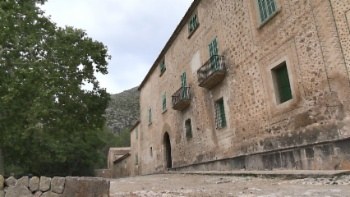
Wednesday, 13th September 2023
Calvià invests 4.7 million euros in the Galatzó estate to relaunch its public use
The energy efficiency project will make Galatzó an environmental reference in the Islands
Calvià Town Hall will invest 4.7 million euros in the renovation of the Galatzó Public Estate. The project involves the rehabilitation of the main house of the estate, with an area of 3.243 m2, focused on achieving the climate objective of reducing carbon emissions, ensuring the digital transition and accelerating the ecological transition in the municipality.
The council will contribute 1.72 million euros in addition to a subsidy of 3 million euros granted by the State. Municipal services have already started work on drafting the basic project and preparing the contracting file for the implementation and installation project and the management of future works. It is expected that they will begin at the end of 2024 in order to meet the deadlines of the call and complete and justify the works before March 2026.
Juan Thomás, deputy mayor for Roads and Works, Environment and Energy Transition, has stressed the importance of the rehabilitation project: «as the Town Hall we must set an example of the importance of achieving not efficiency, but energy excellence. This is a step to implement the newest energy technology in a traditional space such as the Galatzó Estate. "I am sure that once the rehabilitation is completed, Galatzó will be the example to follow for many other public properties on the Islands." He has stressed the complexity of the project, which “is more than necessary. The building urgently requires this intervention. "It will be done with maximum respect for an emblematic and listed building."
For his part, Juan Antonio Amengual, mayor of Calvià, celebrated that "this is the first step to put the Galatzó estate in its rightful place. We have a public space that offers countless possibilities for use. It cannot languish or be forgotten, preserving our heritage must go hand in hand with making it known, opening the doors to residents and visitors, and putting it to full use.
The total investment of the project is broken down into the following series of actions:
· Type A actions: Improving energy efficiency: Interventions are planned aimed at achieving at least a 30% reduction in non-renewable primary energy consumption compared to previously existing emissions.
· Type B: Improving sustainability: Interventions aimed at improving the environmental sustainability of the building, beyond energy aspects, in the following aspects: water, use of materials, waste management, adaptation to climate change and protection of biodiversity.
· Type C: Improving accessibility: Interventions aimed at eliminating barriers and improving physical accessibility
· Type D: Improving habitability and safety: Those interventions aimed at improving the habitability and safety of the building.
· Type E: Building's conservation.




